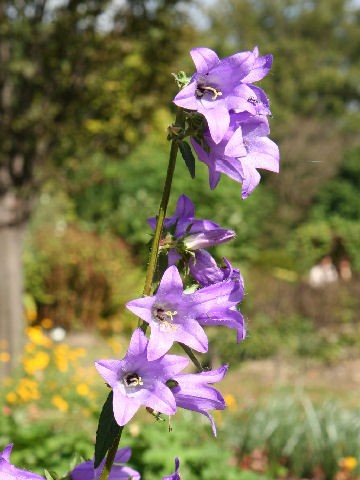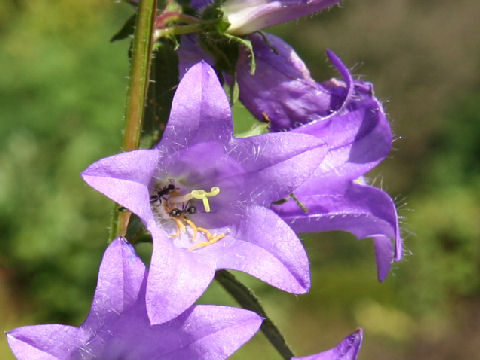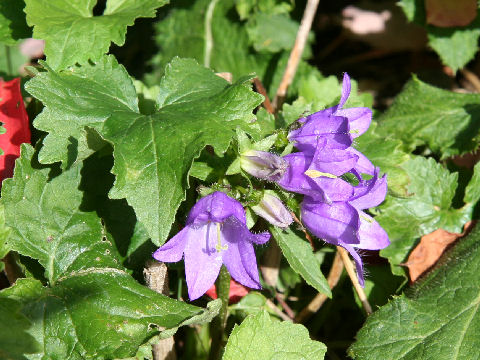 |






|

|
[bpÌ[}jA©çuKAðSɪzµÄ¢Ü·B³ÍUO`XOZ`ÉÈèASÌÉ×Ѫaçɶ¦Ü·BtÍS`ÅAÉÍe¢ª èÜ·BV©çX²ëAs¸ÉóÔð¾µAx`ÌF©çFÌÔð穹ܷBÔ¥âäÓÐÉàש¢Ñª¶¦Ü·B
|

|
LLEÈz^uN®Ì½NÅAw¼Í Campanula grossekiiBp¼Í èܹñB
|

|
The Campanula grossekii belongs to Campanulaceae (the Bellflower family). It is a perennial herb that is distributed in Eastern Europe, mainly from Romania to Bulgaria. It grows 60-90 cm tall and is sparsely covered with fine hairs. The leaves are heart-shaped with coarsely serrated edges. From July to September, bell-shaped, light purple to purple flowers appear in panicles at the top of the stem. The corolla and sepals also have fine white hairs.
|

|
ss¶æus{§A¨vÉÄA2006N1025úBeB
|




